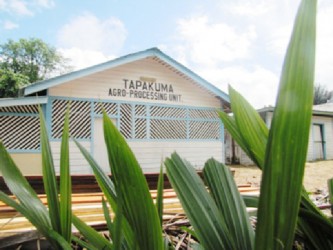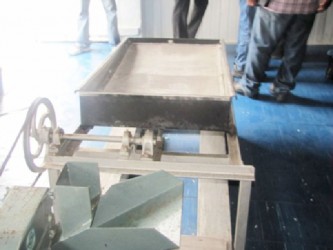Minister of Agriculture Dr Leslie Ramsammy recently met with the Tapakuma village council in Region Two and representatives of the Inter-American Institute for Cooperation on Agriculture (IICA) to discuss plans to expand the cassava industry and restart operations at the village’s cassava processing factory.
The factory was established in 2007 but has not been operational for the past two years as it was not profitable, a report from the Government Information Agency (GINA) said.

Last Monday, the minister revealed at a meeting that included Toshao of Tapakuma Doreen Jacobis, members of the village council and residents, that with support from the IICA, the ministry plans to move cassava production from a subsistence level to an actual industry. Ramsammy explained that the goal is to support production to meet increased demand outside of traditional users in the hinterland community.
“Increasingly cassava products – mainly farine, cassareep, [and] cassava bread – are becoming important parts of our market and supermarkets, but the greatest markets for those products exist on the coast,” Dr Ramsammy said. Markets for these products in the hinterland community remain small as the population there is small; therefore, cassava production cannot be sustained by the hinterland market.
According to Ramsammy, meeting an increasing demand for the product and for better quality product lies in factory operations for the processing of cassava-based items. “The intention is to move towards mechanisation with the resuscitation of the Tapakuma factory and with the installation in Wowetta, Region Nine later this year of a processing factory,” he said. “We are going to work these villages (Tapakuma and Wowetta). We are going to be initial partners in the transformation of the industry. We will do this across the country,” he said.
The minister also said that transforming the cassava industry is an indication of how the ministry intends to proceed with agriculture across the board, particularly those industries outside of rice and sugar; transforming and developing them to expand beyond the traditional level. The support to Tapakuma will mostly take the form of technical guidance for the sustainable operations of the factory. Financial support would also be provided if needed, “but this will be an initial investment that must be repaid by the community for the ministry to rotate it into other agricultural ventures in communities similar to Tapakuma,” he said.

The technical support is scheduled to start soon with various teams meeting with the village to map-out the return of the factory’s operation. A team comprising representatives from National Agriculture Research and Extension Institute (NAREI) and the Food and Agriculture Organisation (FAO) with other partners will assist the village in terms of upgrading their farming techniques and teaching them about new varieties of cassava that will bring better yields and allow for increased production.
Another team from the New Guyana Marketing Corporation (New GMC) and IICA will work with the village to market the cassava products.
The ministry and IICA will help the village with the technology for the processing and the New GMC and IICA will work with them on drafting a business plan (2013-2014) for the project. Ramsammy advised that a business plan is essential to ensure the venture’s success this time around.
According to GINA, it was IICA that engaged the ministry on restarting the factory. IICA Representative Wilmot Garnett explained that a team from IICA, including himself, visited the community a few months ago to conduct training in farmers’ organisation, and to learn about the factory. He said that given the community’s history in production, reactivating the programme, holds a lot of potential.




